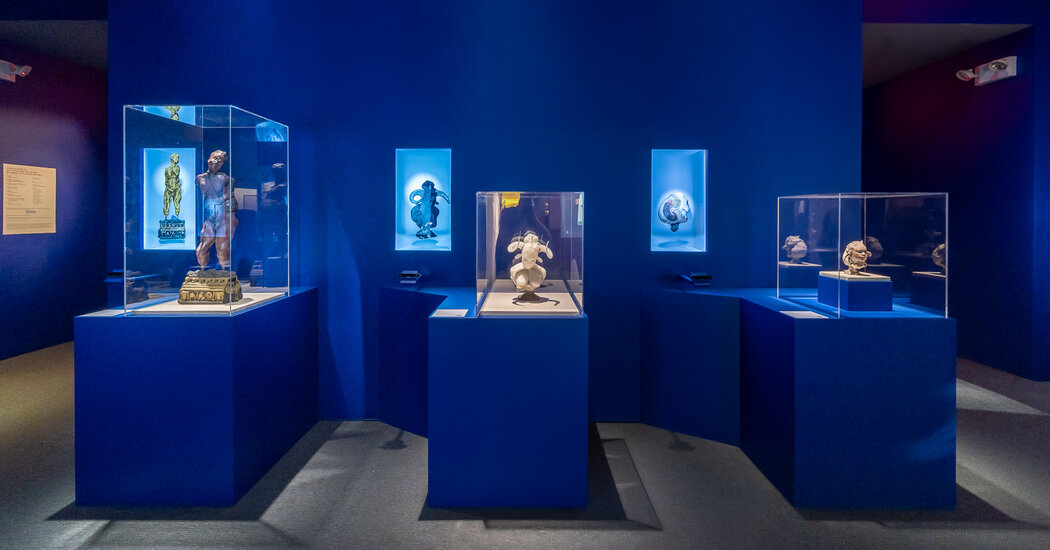The first survey of the influential Net artist turned game developer traces the evolution of digital art from the 1990s to today.
Installed on vintage hardware at the Museum of the Moving Image in Astoria, Queens, laid out chronologically, the first career survey of the innovative Net artist Auriea Harvey tells a story about mortality, and survival.
In Harvey’s jewel-box worlds, there aren’t heroes or villains, just people, losing and loving, enmeshed in the slipstream of tech.
Harvey, born in 1971 in Indianapolis, helped expand the vistas of digital art — utopias, games, crashes and all. In the 1990s, she created boundary-bending imagery with GIFs, Shockwave animations, and the HTML and Java programming languages. Her sumptuous personal website, Entropy8.com, restored for the show, won Webby Awards in 1997 and ’98.
In the last few years, Harvey turned to sculpting imaginary but mythic-seeming artifacts that exist as both 3-D printed statuary and glossy virtual models. At the museum, you can make several rotate on transparent screens by waving your hand. The “mixed reality” sculptures incorporate scans of ancient artwork, hand-shaped clay and her own facial features — they look cracked, weathered, instantly timeless.
With each technological shift, the scintillation of new possibilities meets the tug of obsolescence.
